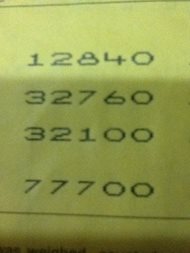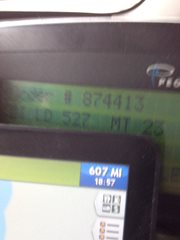The one truck owner operator's biggest competitive advantage should be the driver. That driver should  always be driving that truck to maximize profitability. There are limiting factors. Safety and profitability go hand and hand. A crash of any kind limits profitability. Downtime is the enemy of profitability. Crashes produce downtime. Don't do that. When you calculate the proper speed to drive always include the limiting factors.
always be driving that truck to maximize profitability. There are limiting factors. Safety and profitability go hand and hand. A crash of any kind limits profitability. Downtime is the enemy of profitability. Crashes produce downtime. Don't do that. When you calculate the proper speed to drive always include the limiting factors.
Drive for maximum profits, not just gross revenue. Hammer down is not always the answer. The biggest trick is to set up the equation. Falling fuel prices have changed one of the factors. They haven't changed the equation. We are looking at 2 main things. They are revenue per mile and cost per mile. Costs can be broken down into 2 parts. They are fixed costs and variable costs. I don't include fixed costs in the daily equation. The daily equation, I will just use variable costs. The main variable cost for the owner operator is fuel. At $4 dollars a gallon, it is a bigger factor than at $2 per gallon. It is still  your main variable cost.
your main variable cost.
Maintenance is your other main variable cost. It is not as big a factor as fuel, but it matters. There is a strong correlation between fuel consumption and maintenance costs. When I talk to fleets, they can be reluctant to give back the majority of fuel saving back to the driver as part of a bonus program. Then I will ask them, Is the truck (driver) with the highest MPG also your truck (driver) with the lowest maintenance cost? It may not always be THE one, but they definitely can see the correlation between higher fuel mileage and lower maintenance.
The biggest limiting factor is how far do you have to drive. I like graphs. Set yourself the graph. On the vertical line set up cost per mile. On the horizontal line set up revenue per mile. Speed is the variable that you can control. MPG goes down as revenue goes up. What you are looking for is where the lines intersect. The limiting factor that is easily entered into the graph is how far do you need to go. That is a flat line. If the revenue and cost lines intersect above that line, they become irrelevant. Once you cross over that limiting factor, your per mile profitability starts dropping.
 Information is key. The easiest one is how far do you have to run that day. The harder one is how far do you have to run that week. Your hours available (Hours of Service) are also a limiting factor. I know what I am doing today and tomorrow, but not all week. Information is good. I know how far I have to run today and tomorrow, but not full the full week. I may be conserving hours that I will never use. So, I try to reach the customer and save hours for the next day. Remember though that safety is always the biggest factor. Running into stuff always is unprofitable.
Information is key. The easiest one is how far do you have to run that day. The harder one is how far do you have to run that week. Your hours available (Hours of Service) are also a limiting factor. I know what I am doing today and tomorrow, but not all week. Information is good. I know how far I have to run today and tomorrow, but not full the full week. I may be conserving hours that I will never use. So, I try to reach the customer and save hours for the next day. Remember though that safety is always the biggest factor. Running into stuff always is unprofitable.
Current Streak (17) YTD (56 miles)